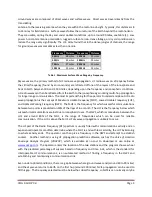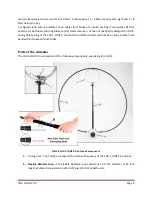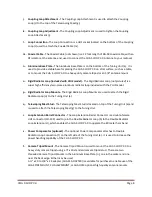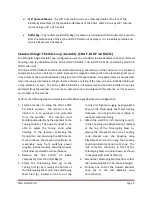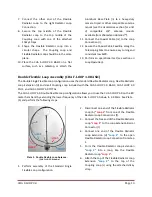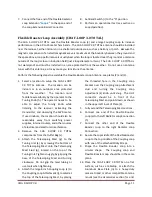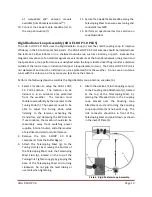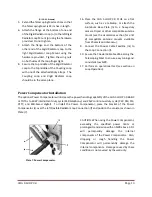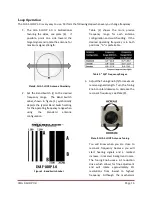
CHA F-LOOP 3.0
Page
5
Ground waves are composed of direct waves and surface waves. Direct waves travel directly from the
transmitting
antenna to the receiving antenna when they are within the radio line-of-sight. Typically, this distance is 8
to 14 miles for field stations. Surface waves follow the curvature of the Earth beyond the radio horizon.
They are usable, during the day and under optimal conditions, up to around 90 miles, see table (1). Low
power, horizontal antenna polarization, rugged or urban terrain, dense foliage, or dry soil conditions can
reduce the range very significantly. The U.S. Army found that in the dense jungles of Vietnam, the range
for ground waves was sometimes less than one mile.
Frequency Distance Frequency Distance
2 MHz
88 miles
14 MHz
33 miles
4 MHz
62 miles
18MHz
29 miles
7 MHz
47 miles
24 MHz
25 miles
10 MHz
39 miles
30 MHz
23 miles
Table 1. Maximum Surface Wave Range by Frequency.
Sky waves are the primary method of HF radio wave propagation. HF radio waves on a frequency below
the critical frequency (found by an ionosonde) are reflected off one of the layers of the ionosphere and
back to Earth between 300 and 2,500 miles, depending upon the frequency and ionospheric conditions.
HF radio waves can then be reflected from the Earth to the ionosphere again during multi-hop propagation
for longer range communication. The most important thing for the operator to understand about HF radio
wave propagation is the concept of Maximum Usable Frequency (MUF), Lowest Usable Frequency (LUF),
and Optimal Working Frequency (OWF). The MUF is the frequency for which successful communications
between two points is predicted on 50% of the days of in a month. The LUF is the frequency below which
successful communications are lost due to ionospheric loses. The OWF, which is somewhere between the
LUF and around 80% of the MUF, is the range of frequencies which can be used for reliable
communication. If the LUF is above the MUF, HF sky wave propagation is unlikely to occur.
The HF part of the Radio Frequency (RF) spectrum is usually filled with communications activity and an
experienced operator can often determine where the MUF is, and with less certainty, the LUF by listening
to where activity ends. The operator can then pick a frequency in the OWF and attempt to establish
contact. Another method is using HF propagation prediction software, such as the
Voice of America
Coverage Analysis Program (VOACAP)
, which is available at no cost to download or use online at
. The operator enters the location of the two stations and the program show a wheel
with the predicted percentage of success based on frequency and time. ALE, which is the standard for
interoperable HF communications, is an automated method of finding a frequency in the OWF and
establishing and maintaining a communications link.
Even under optimal conditions, there is a gap between where ground waves end (around 40 to 90 miles)
and the sky wave returns to Earth on the first hop (around 300 miles). NVIS propagation can be used to
fill this gap. The frequency selected must be below the critical frequency, so NVIS is can normally only be





